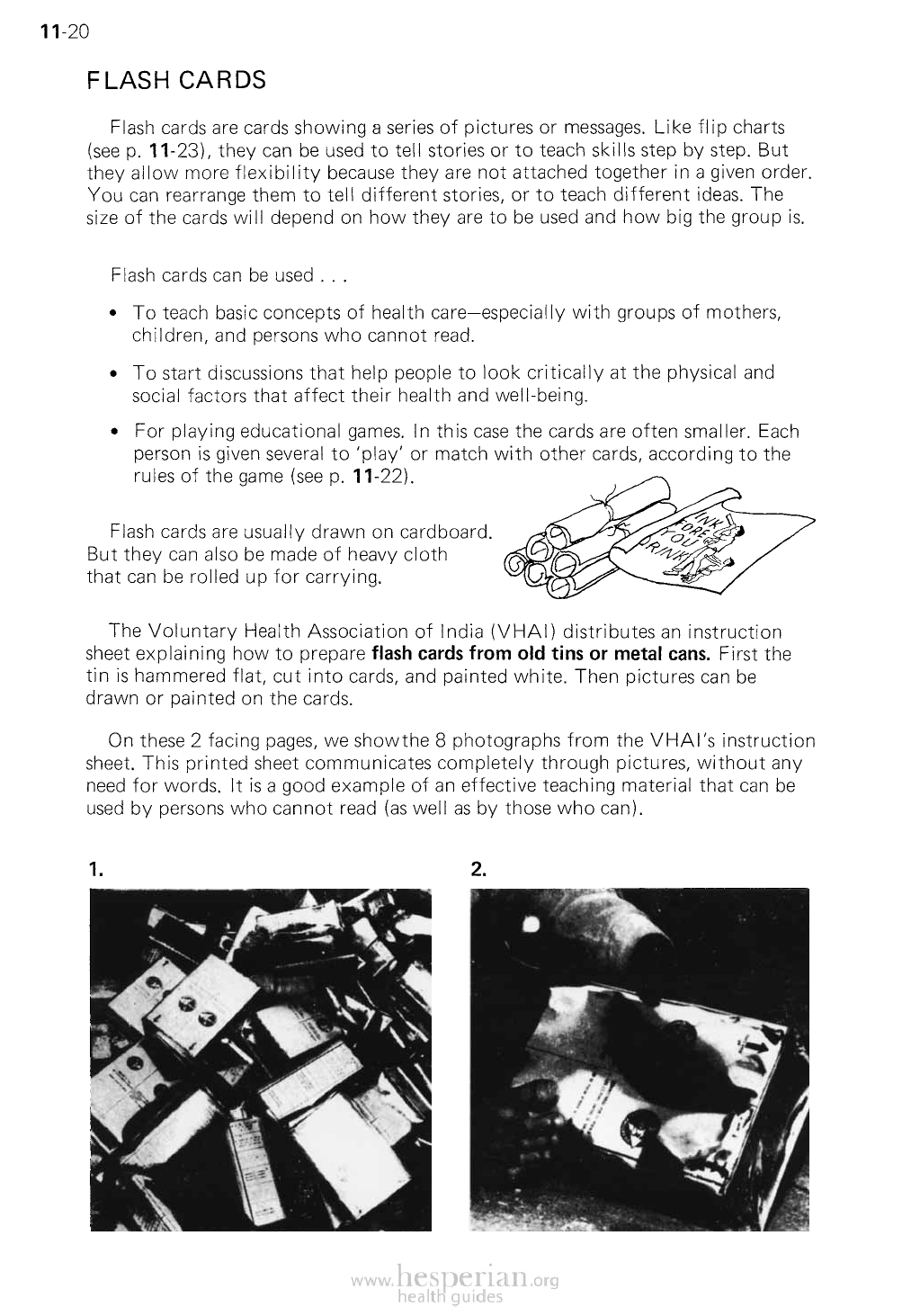
11-20
FLASH CARDS
Flash cards are cards showing a series of pictures or messages. Like flip charts
(see p. 11-23), they can be used to tell stories or to teach skills step by step. But
they allow more flexibility because they are not attached together in a given order.
You can rearrange them to tell different stories, or to teach different ideas. The size
of the cards will depend on how they are to be used and how big the group is.
Flash cards can be used . . .
• To teach basic concepts of health care—especially with groups of mothers,
children, and persons who cannot read.
• To start discussions that help people to look critically at the physical and social
factors that affect their health and well-being.
• For playing educational games. In this case the cards are often smaller. Each
person is given several to ‘play’ or match with other cards, according to the
rules of the game (see p. 11-22).
Flash cards are usually drawn on cardboard.
But they can also be made of heavy cloth that
can be rolled up for carrying.
The Voluntary Health Association of India (VHAI) distributes an instruction
sheet explaining how to prepare flash cards from old tins or metal cans. First the
tin is hammered flat, cut into cards, and painted white. Then pictures can be drawn
or painted on the cards.
On these 2 facing pages, we show the 8 photographs from the VHAI’s instruction
sheet. This printed sheet communicates completely through pictures, without any
need for words. It is a good example of an effective teaching material that can be
used by persons who cannot read (as well as by those who can).